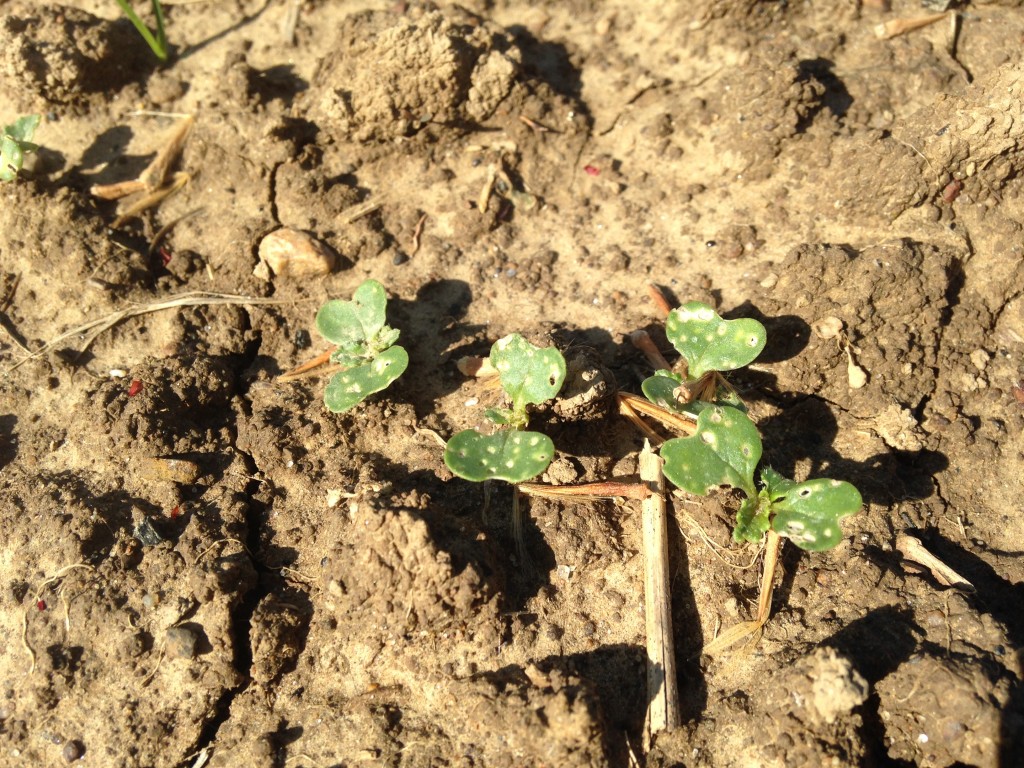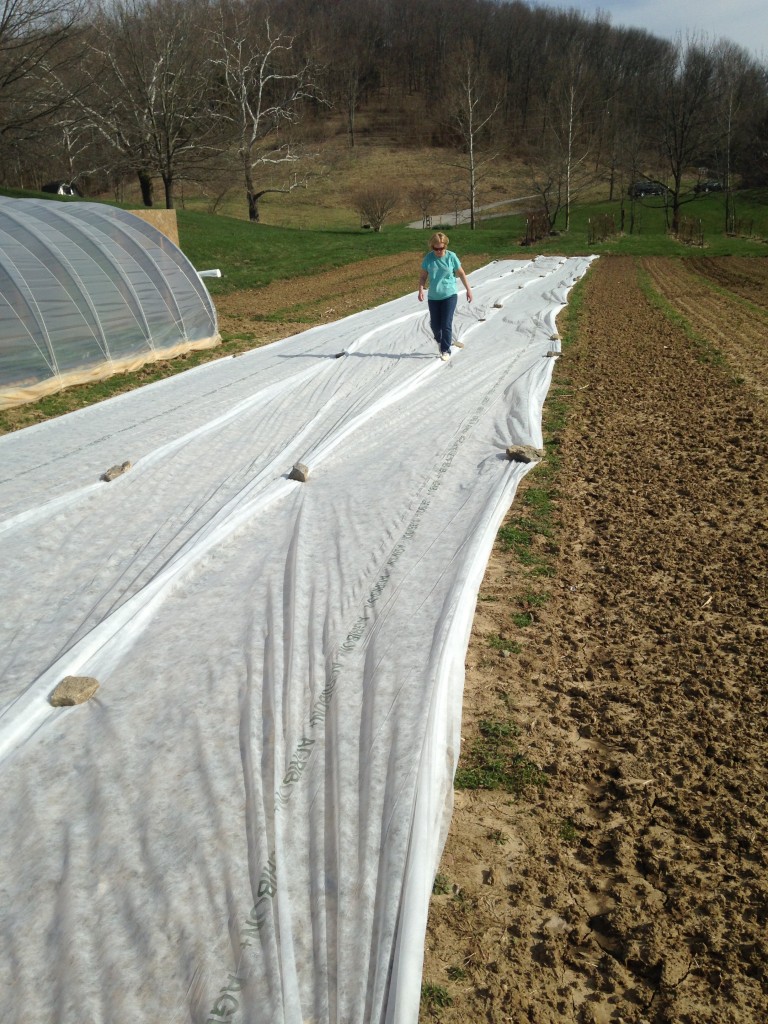This weekend marks a momentous occasion for me and the farm – my first trip to the farmers market! Four busy months have passed since I moved onto my little piece of leased land down in Belleview Bottoms, and now it’s time for the vegetables of Dark Wood Farm to make their grand debut and start filling the bellies of folks around Northern Kentucky and Cincinnati. On Sunday, May 4 from 10AM-2PM, I’ll be bringing lots of spring greens to the farmers market at Findlay Market. Spring greens are a great source of vitamins, minerals, and fiber, which improve digestion and help your body detox after a long winter of heavy, fatty foods. As a bonus, most spring greens will enliven your taste buds with a spicy kick, bold nutty flavor, or bitter bite.


Most of the greens I’m bringing to market this week are in the mustard plant family, including arugula, french breakfast radishes, and Asian salad greens including mizuna and tatsoi. They went into the ground as seeds on March 24 and have grown happily through the cold, wind, rain, and even heat over the past 6 weeks. Their only nemesis during the spring months is a small, black, jumping insect called the flea beetle. Flea beetles emerge around the same time that the redbud trees bloom here in Kentucky, and when they start looking for food, they LOVE the spicy flavor of plants in the mustard family. Left unprotected from the flea beetle, spring mustards would look like they were blasted by a shotgun, with tiny holes all over the leaves. Some farmers prevent flea beetle damage by applying weekly doses of insecticides, but I don’t want to eat raw greens covered with chemicals, so I use fabric row covers to cover the vegetables that are most susceptible to flea beetle damage. Even so, some flea beetles find their way under the fabric and leave their trademark holes on my spring greens.


Since I cut spring greens by hand, I can check for flea beetle damage as I harvest. Really holey leaves get tossed on the ground become compost and feed the soil, but I do keep some leaves that have minimal damage from the flea beetle. The holes do nothing to affect the taste and quality of the vegetables, so if you find an arugula or radish leaf with a hole or two, don’t worry – in fact, rest assured that your veggies are free from chemicals and safe to eat.

